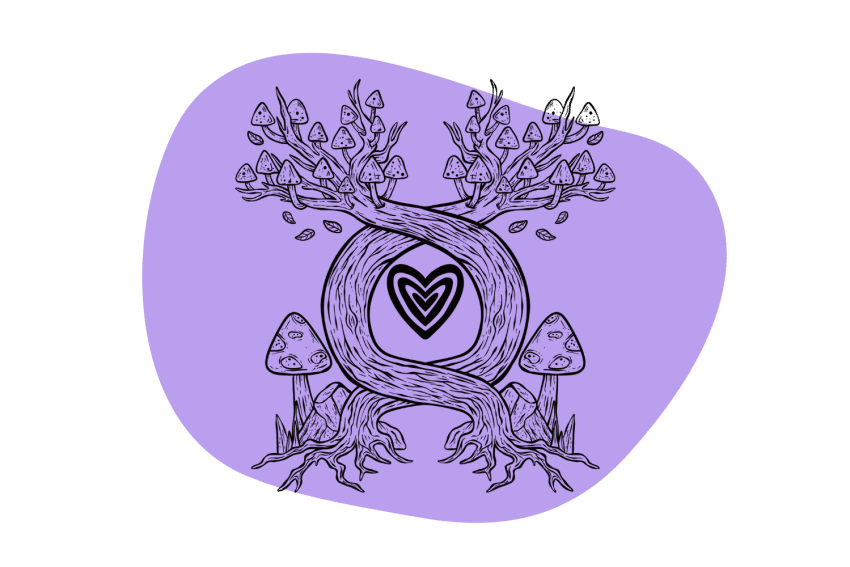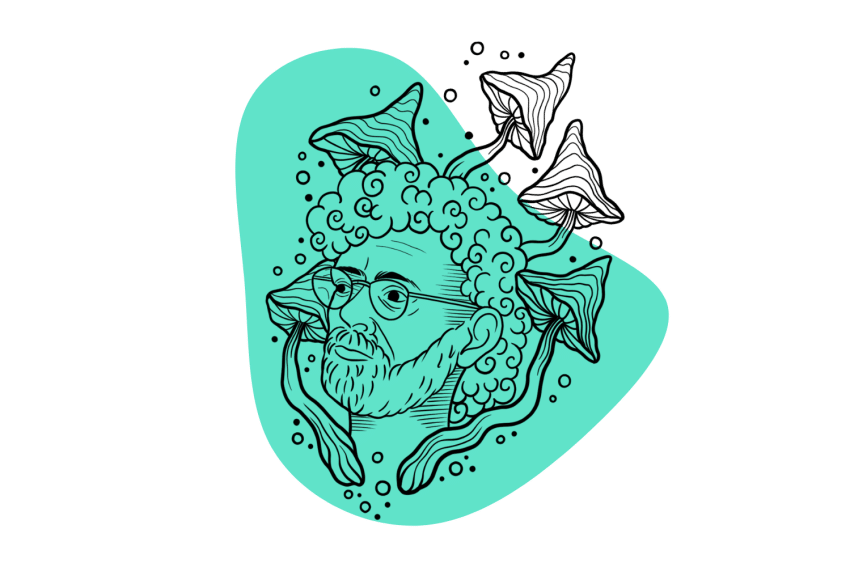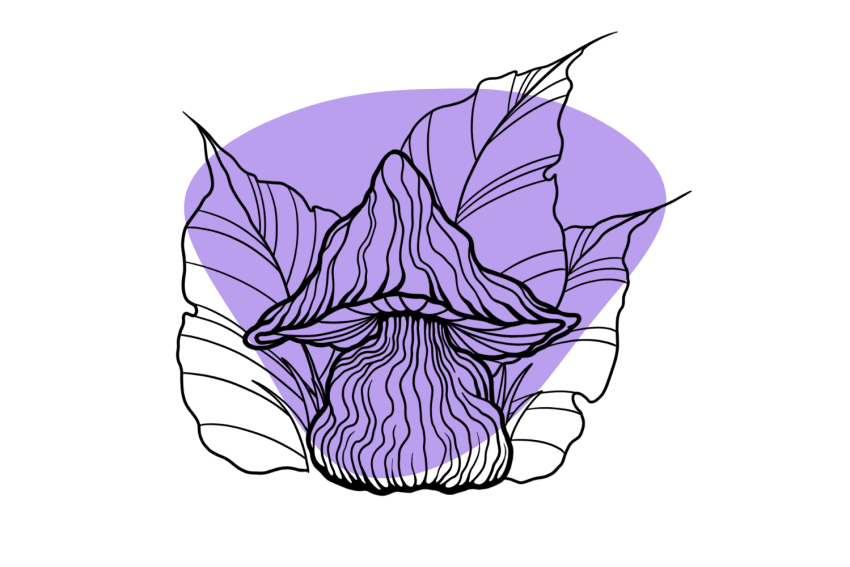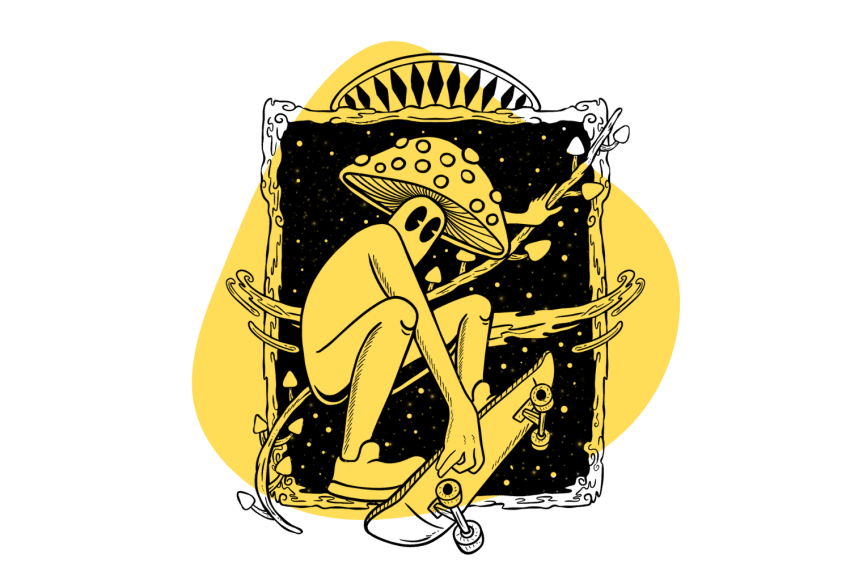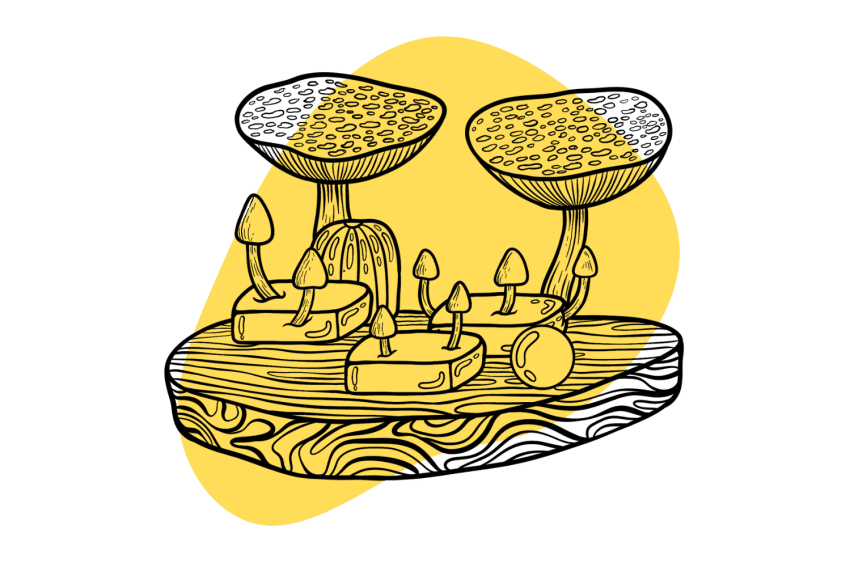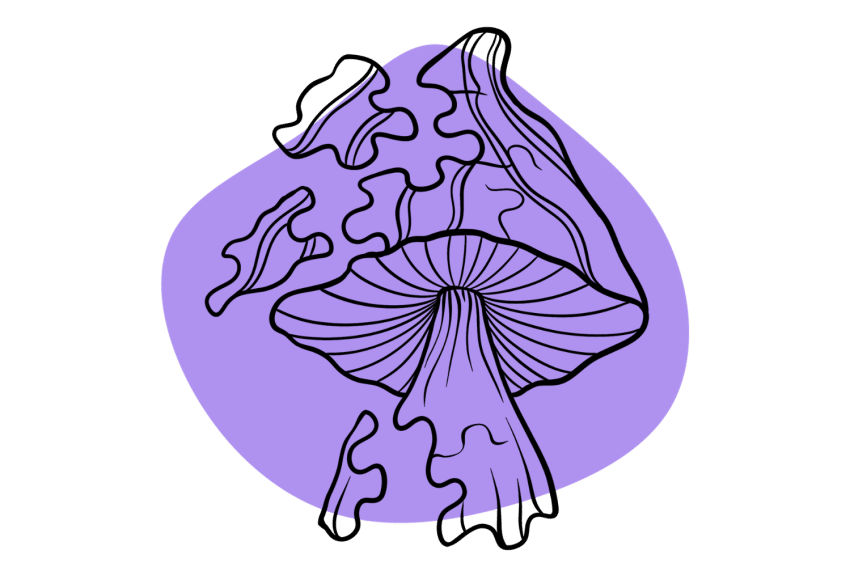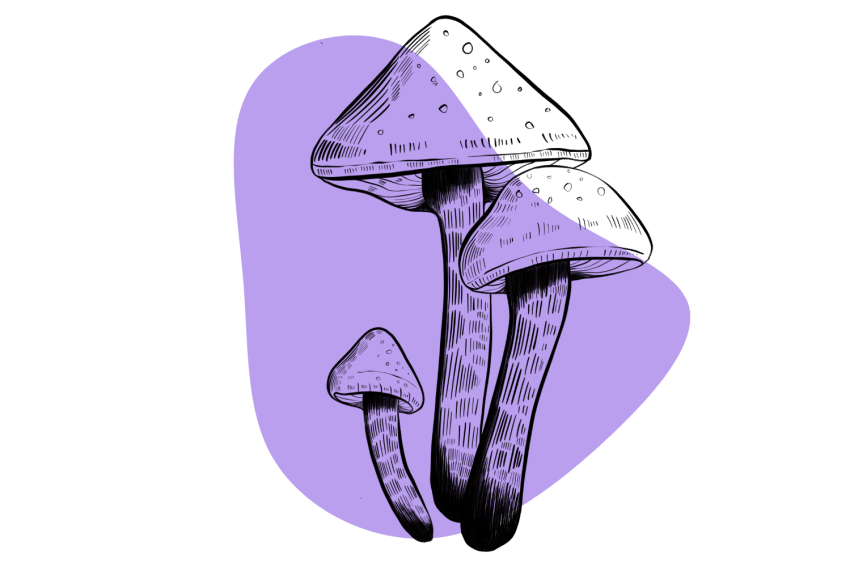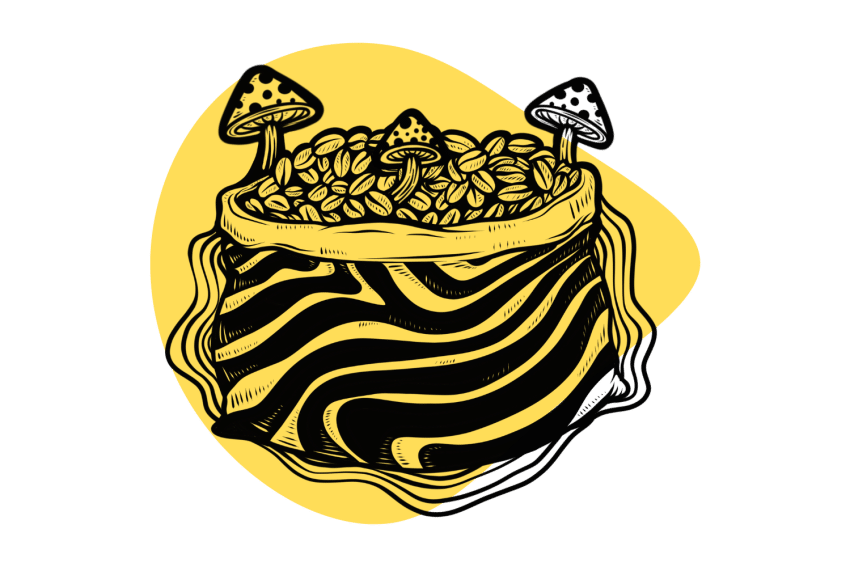What Do Magic Mushrooms Look Like?
You may think of Amanita muscaria with its red and white spotted cap when you picture a “magic mushroom.” However, true psychedelic mushrooms are much less conspicuous and come in a wide range of shapes and sizes.
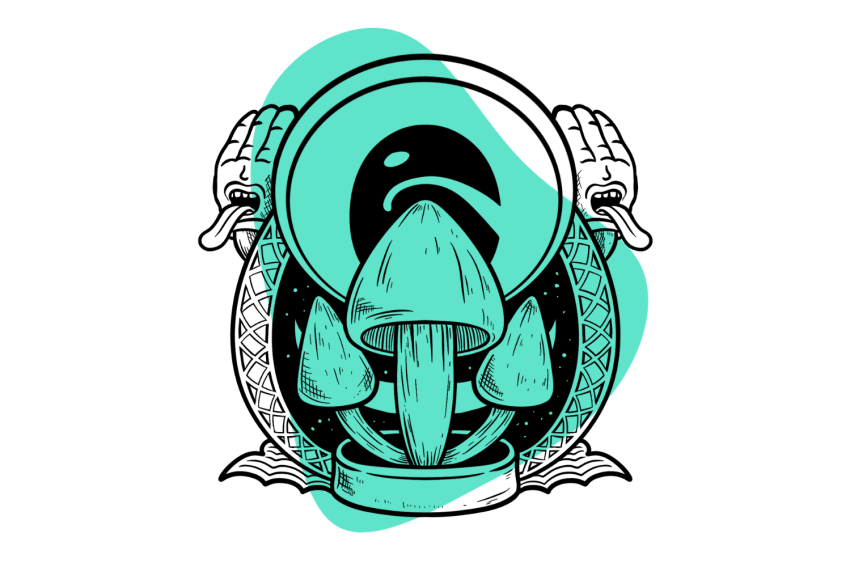
Magic mushrooms come in all different shapes, sizes, and colors. Several different species of fungi produce psilocybin and psilocin — the alkaloids responsible for the psychedelic effects magic mushrooms produce.
Although there are many different species, psilocybin-producing shrooms are only present in a handful of genera (families). What this means is that many magic mushroom species share similarities. Most psychedelic mushrooms also bruise blue when damaged; this indicates the presence of psilocybin.
In this article, we’ll be exploring the physical features of the most common “magic mushroom” species by:
- Looking at what defines a “magic mushroom.”
- Checking out the physical features of six common psilocybin-producing mushroom species
- Looking at a few lesser-known magic mushroom species
What is a “Magic Mushroom?”
When the term “magic mushroom” is used, most people are referring to fungi that induce a strong psychedelic trip. Although there are several species of mushrooms with altering compounds that can induce a psychedelic experience, most people associate psilocybin-producing shrooms when talking about magic mushrooms.
Psilocybin is the active component in many magic mushrooms. Psilocybe cubensis, Psilocybe semilanceata (Liberty Cap mushrooms), and Psilocybe azurescens (Flying Saucers) are just a few different species that produce this hallucinogenic compound.
Psilocybin itself isn’t the psychedelic component, though. It’s quickly metabolized by the liver into psilocin, which then works by binding to serotonin receptors — primarily 5-HT2A. This binding leads to changes in the release of neurotransmitters, including serotonin, dopamine, and glutamate. It’s believed that the interaction with these receptors is responsible for the alterations in perception, mood, and cognition associated with magic mushroom consumption.
The effects of psilocybin can last for several hours, with the peak occurring two to three hours after consumption. The intensity of a psilocybin trip depends on the strength of the magic mushrooms, the amount consumed, the user’s metabolism, and the method of consumption.
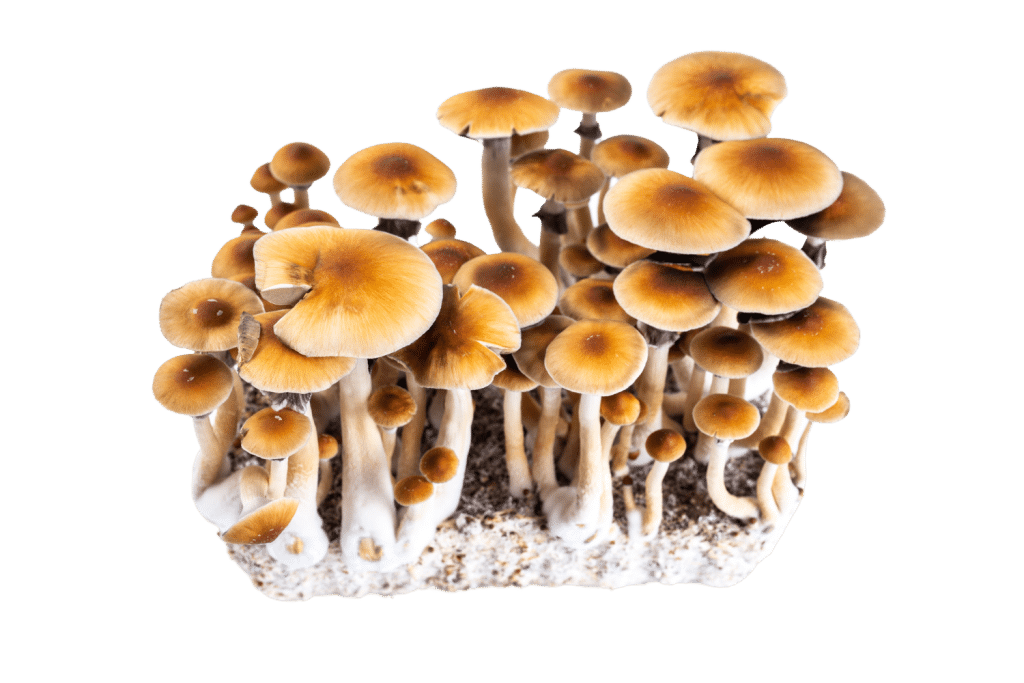
Different Types of Magic Mushrooms & Their Physical Features
There are well over 200 individual species of magic mushrooms. The most common you’ll find on the street or from mushroom dispensaries is Psilocybe cubensis — but depending on where you live, you may be able to find dozens of other psychedelic species in your local parks and forests.
Here are the most common types of magic mushrooms and their distinguishing features:
1. Psilocybe cubensis
Psilocybe cubensis is the most common species of psilocybin mushroom. These shrooms can be found growing across the globe in a variety of different environments, and they’re a popular choice among cultivators for their resistant traits.
P. cubensis mushrooms are generally 4–15 cm tall with medium-sized caps. The caps are caramel to brown-colored, saucer-shaped, and have a distinct nipple in the center. The stems are white and moderately thick, and the gills are closely spaced, light to dark gray, and produce purple-black spores.
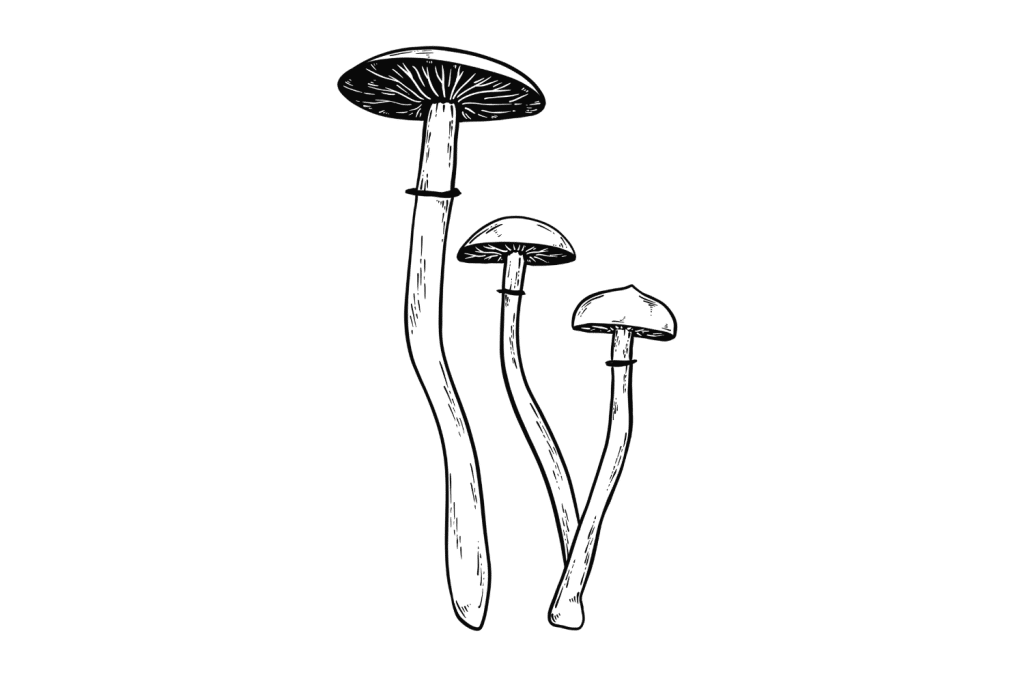
Although most Psilocybe cubensis shrooms share similar traits, there are over 100 different strains that can look vastly different from one another. Many of these strains have been created through cross-cultivation. Strains such as Penis Envy have thick stems and bell-shaped caps — showing little resemblance to more recognizable Psilocybe cubensis strains such as Golden Teacher.
The genetic diversity of this species can make it difficult to identify. However, most samples found in the wild tend not to differ as much as samples created through cross-cultivation.
2. Psilocybe azurescens
Psilocybe azurescens is regarded as the most potent psychedelic mushroom species — producing up to 2% psilocybin.
This species looks remarkably similar to two other species — Psilocybe cyanescens and Psilocybe allenii. The caps are caramel-colored and boast a wide, saucer-like shape with a distinct nipple in the center, owing to its common name, “Flying Saucer.”
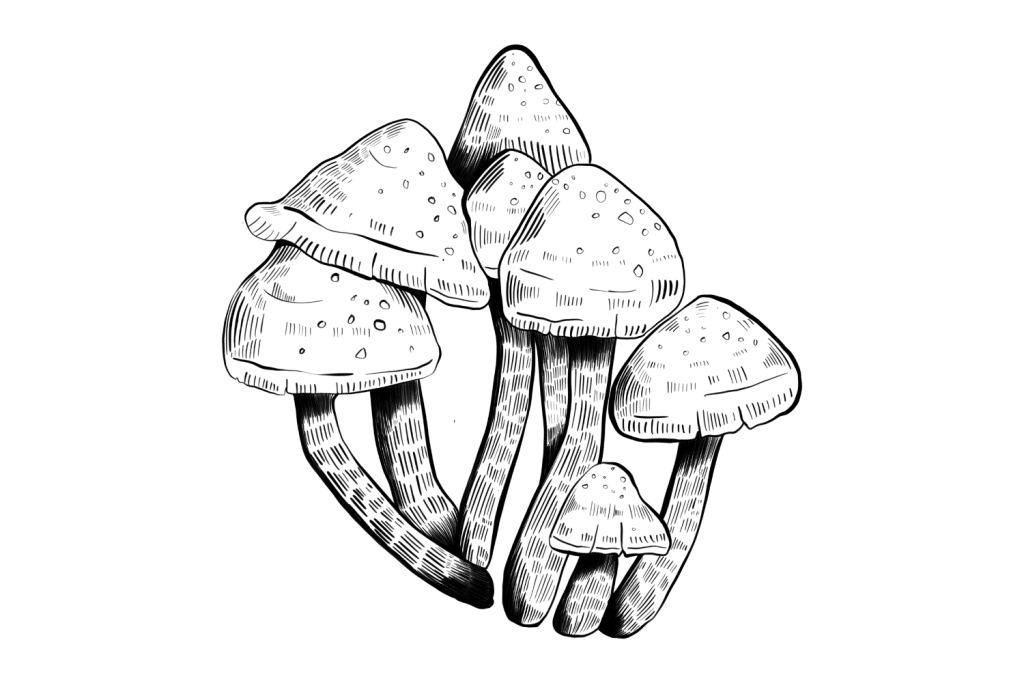
The cap ranges from 3–10 cm in diameter and is conical when young, becoming more convex and saucer-shaped when mature. It has a shine to it and is smooth yet sticky to the touch. Where the cap meets the gills, the flesh is thinner and often takes on a blue hue. When the caps split, a clear gelatinous pellicle is notable.
The stem of P. azurescens ranges from 9–20 cm in length and 3–6 mm wide. They are creamy-yellow during dry weather and gray to brown when wet. When split, the stems are fibrous and stringy.
3. Psilocybe mexicana
Psilocybe mexicana is a small psilocybin mushroom species found across several regions of Mexico. This was one of the first magic mushrooms to be brought to the West, and its use dates back over 2000 years to the Aztec and Mayan civilizations.
This species shares several similarities with Psilocybe semilanceata — a species found growing across Europe and North America. P. mexicana shrooms grow to a maximum height of 12 cm and have a brown conical cap that turns convex in maturity. The caps often have a distinct nipple, but this isn’t always the case.
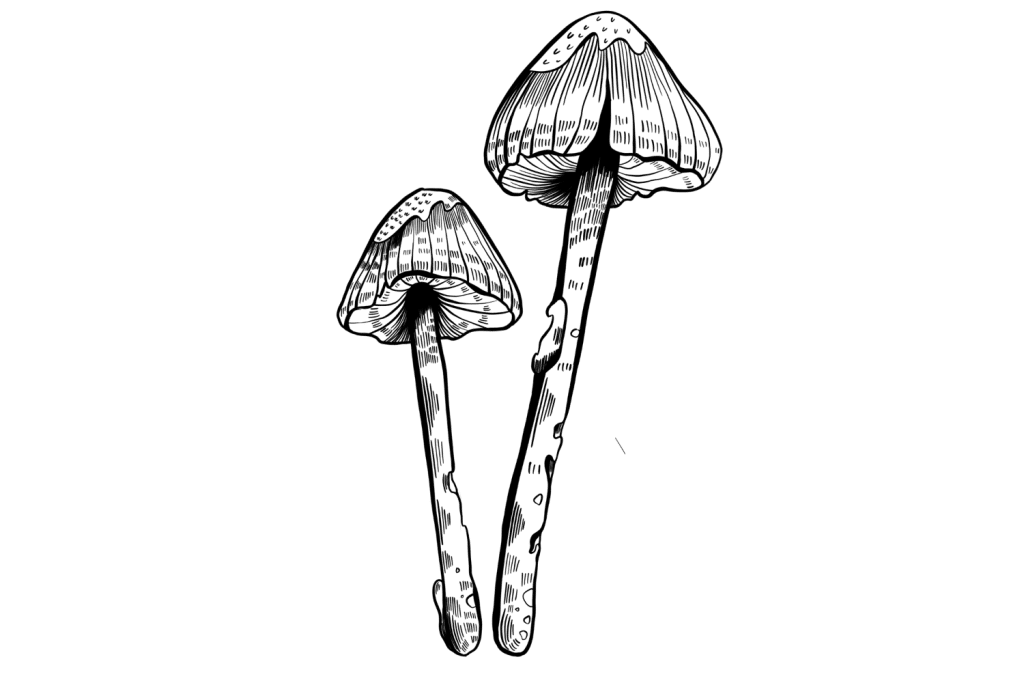
The stems are caramel-colored when dry and darker brown when wet. The caps are a light brown color (also darkening when wet) and have a darker ring at the base where the cap joins the gills. The gills themselves are black-brown, and the spores are purple-black.
Psilocybe mexicana produces sclerotia — densely packed bundles of mycelium that grow under the ground. These truffle-like structures are yellow to dark brown and are similar in size to a Brazil nut.
4. Psilocybe semilanceata
Psilocybe semilanceata is Europe’s favorite magic mushroom species. Also known as the Liberty Cap, this psychedelic fungi is small but potent.
Liberty Cap shrooms are 3–10 cm high with small conical caps that have a distinct nipple on top. The long, thin stems and light-colored caps camouflage the shrooms that nestle between tufts of grass.
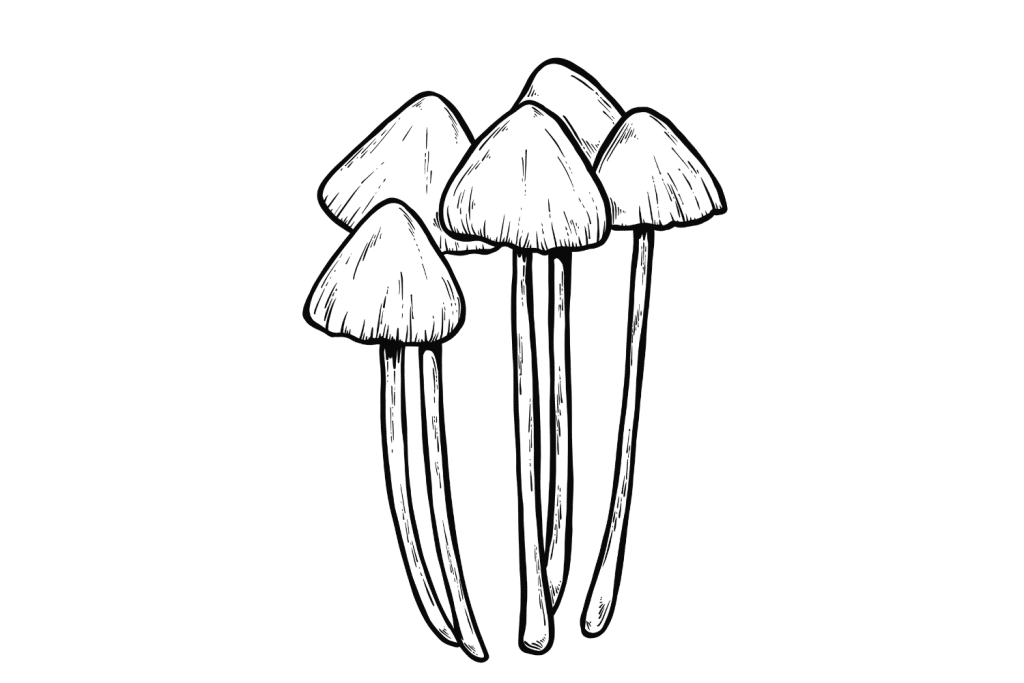
When dry, the caps are a creamy color, and when wet, they turn brown. Wet caps have a clear gelatinous pellicle — this can be seen as a clear, viscous slime when the cap is split. Much like Psilocybe mexicana, P. semilanceata has a darker ring around the base of the cap where the flesh is thinner.
The gills of Psilocybe semilanceata mushrooms are gray in younger mushrooms, turning black as they begin to sporulate in maturity. The spores themselves are a purple-brown color.
5. Psilocybe cyanescens
Psilocybe cyanescens is a wood-loving psychedelic fungi species that is capable of producing remarkably high levels of psilocybin. This species adopts the common name “Wavy Cap” because the rims of the caps are undulated.
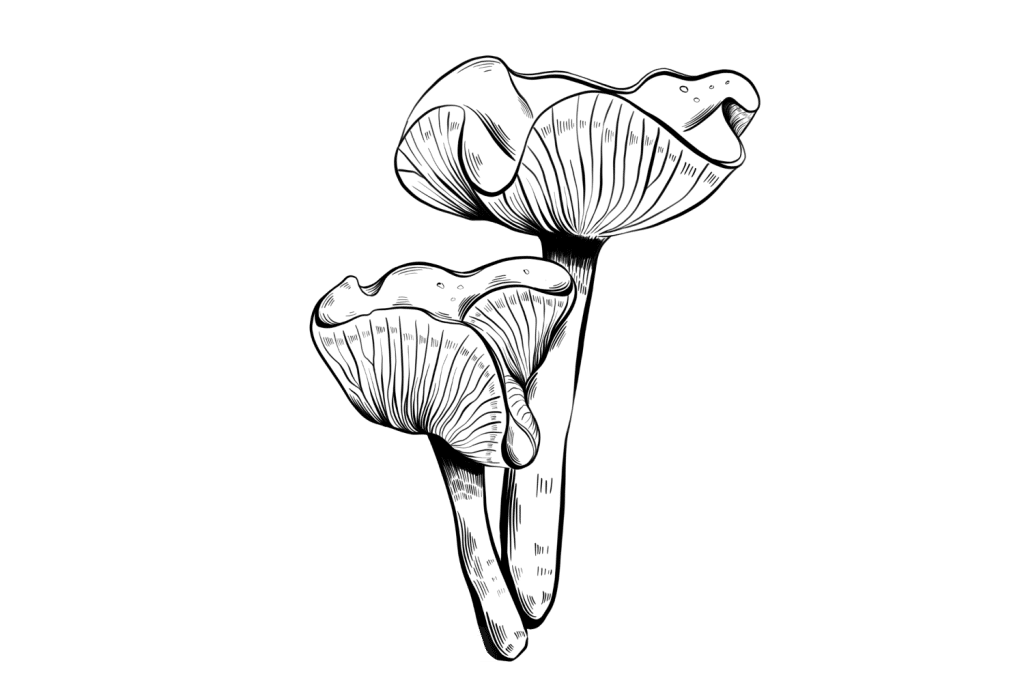
Found growing on decaying wood and mulch, Psilocybe cyanescens mushrooms have characteristic wavy caps that are orange-brown in color. The caps range from 1–3 cm in diameter and support cream-colored gills underneath. The stems are white and bruise blue when damaged, holding the cap 4–8 cm above the base. The spores are dark with a purple hue.
Wavy caps grow in dense clusters like many other wood-loving species of fungi. This can make identifying them difficult — they have many lookalikes.
6. Panaeolus cyanescens
Not to be confused with Psilocybe cyanescens or the Psilocybe cubensis strain with the same common name (Blue Meanies), Panaeolus cyanescens is a shroom high in psilocin — the readily available form of psilocybin.
Panaeolus cyanescens, also known commonly as Blue Meanies, is one of a handful of Panaeolus species that produces psilocybin. Although psilocybin levels are comparable to an average strain of P. cubensis, the high psilocin levels mean this mushroom kicks in hard and fast.
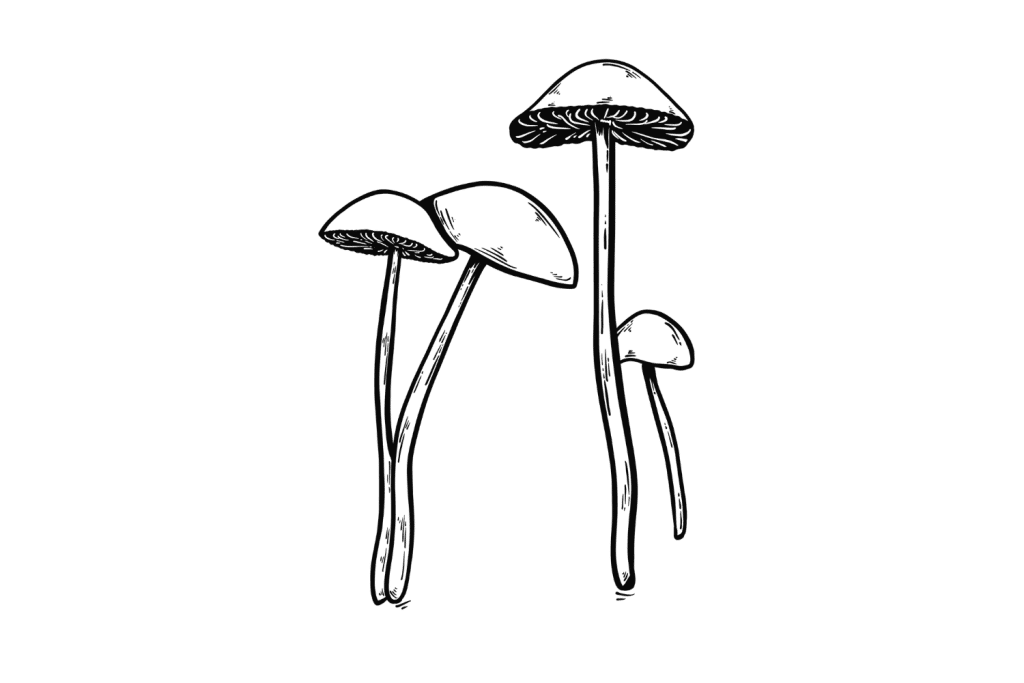
The mushrooms are relatively small compared to other psilocybin-producing species, with cap diameters ranging from 0.5–3 cm and stem heights of 7–12 cm. The stems and caps are light brown when young, progressing to an off-white to light gray color when mature.
The caps are hemispheric in young mushrooms and become more bell-shaped during maturity. The gills are closely packed with a gray-black coloration. The spores are mostly black with a purple hue that can be noted under a microscope.
Other Psychedelic Mushroom Species
The species listed above are some of the most prevalent “magic mushrooms” across the globe. However, they aren’t the only species that produce psilocybin.
There are over 200 known mushroom species that produce psilocybin, most of which are in the genus Psilocybe.
Here’s a list of some lesser-known mushroom species that produce psilocybin:
- Gymnopilus aeruginosus
- Gymnopilus junonius
- Gymnopilus luteofolius
- Gymnopilus purpuratus
- Inocybe aeruginascens
- Inocybe corydalina
- Pluteus salicinus
- Conocybe cyanopus
- Conocybe siligineoides
- Conocybe smithii
- Copelandia cyanescens
- Copelandia tropicalis
- Panaeolus fimicola
- Panaeolus papilionaceous
- Panaeolus subbalteatus
- Psilocybe baeocystis
- Psilocybe caerulescens
- Psilocybe ovoideocystidiata
- Psilocybe pelliculosa
- Psilocybe stuntzii
- Psilocybe tampanensis

